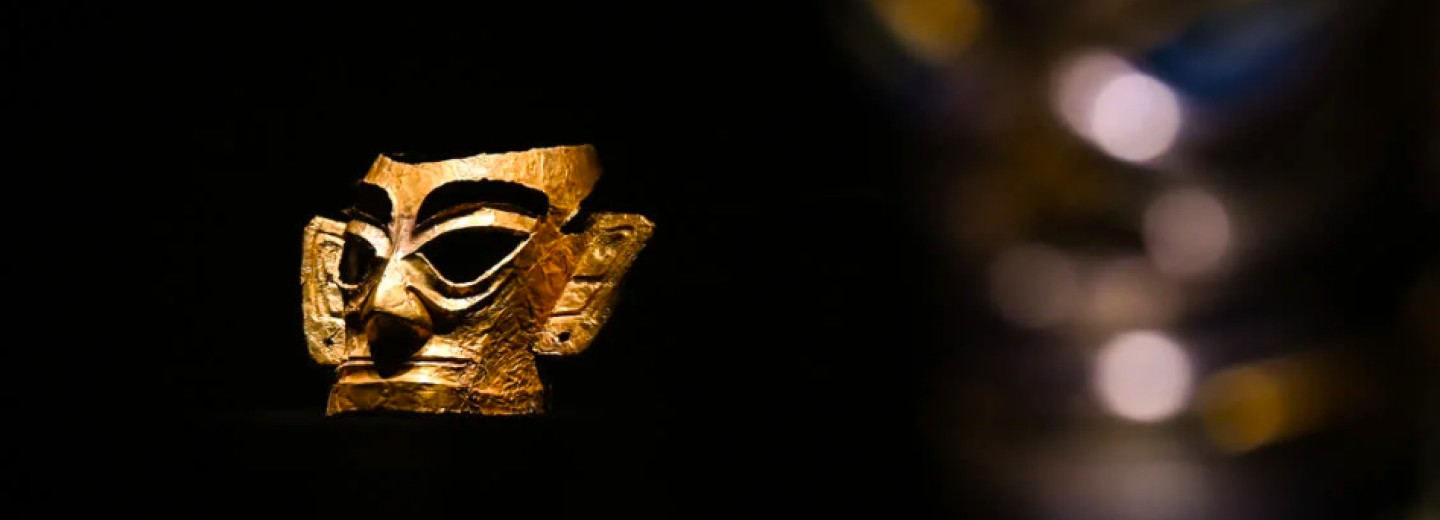Sanxingdui Museum
We have written before about the fantastic relics in Sanxingdui. On 9th April 2021, we covered the story for the first time. In Study of Sichuan Research, we joined Chinese historians in discussing what this might mean for Chinese history and culture. Today, we celebrate the opening of a new museum displaying relics as never before. We have adapted this post from an article in I-Feng.
On 27th July this year, the new museum of Sanxingdui was opened in Guanghan City, Sichuan Province. Here, visitors can fully appreciate the brilliance of the ancient Shu civilisation and the profound depths of the long river of Chinese culture.
Gold masks, bronze altars… Not long ago, the Sanxingdui experience was hidden in the soil. But now the audience sees the "true face of Lushan".
The new Sanxingdui Museum has over 1,500 pieces, including pottery, bronze, jade, gold, and ivory. Nearly 600 cultural relics, including more than 300 newly unearthed cultural relics, are on display for the first time.
The star attractions of the old museum have also been moved into the new museum. While highlighting the visual impact, the new exhibition strives to tell the story behind these cultural relics.
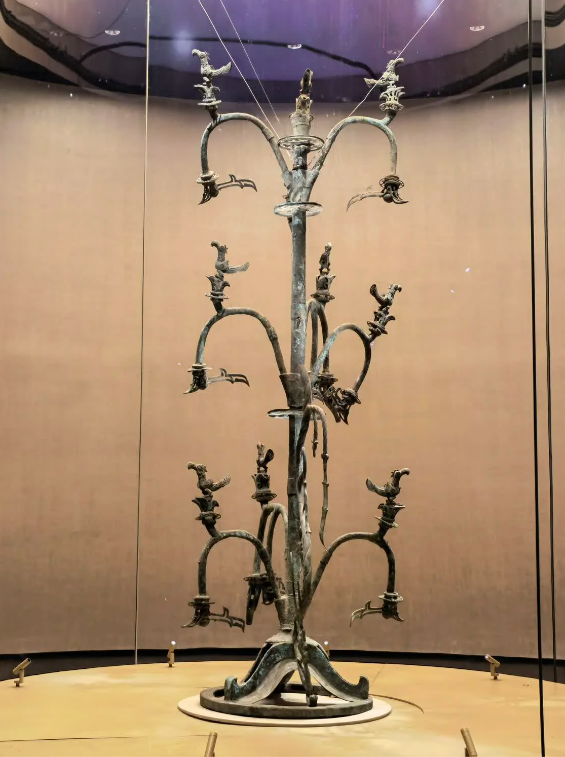
The famous bronze tree is photographed in the new museum of Sanxingdui Museum. Xinhua News Agency
Although the top of the tree is incomplete, its height still requires visitors to look up. The tree is divided into three layers, with three branches on each layer. The branches are flowers, and the fruit is decorated. The superb casting process of 3,000 years ago is transparent immediately.
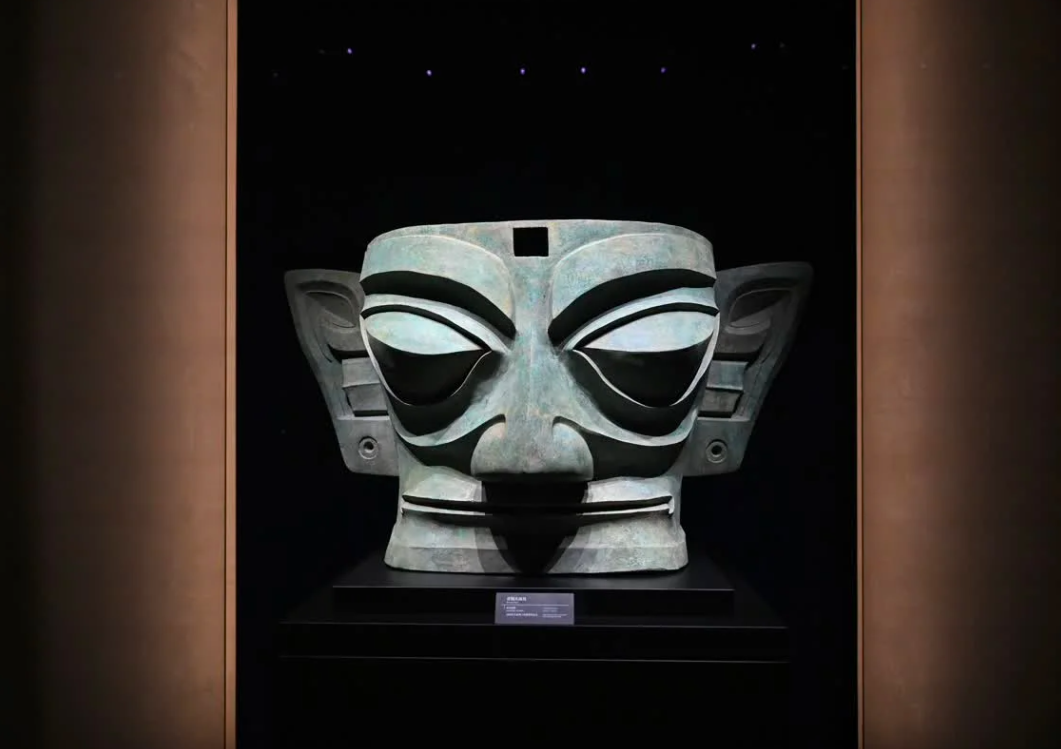
This is a bronze mask photograph in the new museum of the Sanxingdui Museum. Xinhua News Agency
I hope the visitors will appreciate the extraordinary imagination and creativity of Sanxingdui, understand the superb bronze casting technology, and feel the charm of Chinese culture
Yu Jian, deputy curator of Sanxingdui Museum and director of the Cultural Relics Preservation Department
The latest multidisciplinary research results in the past two years are also presented in the exhibition.
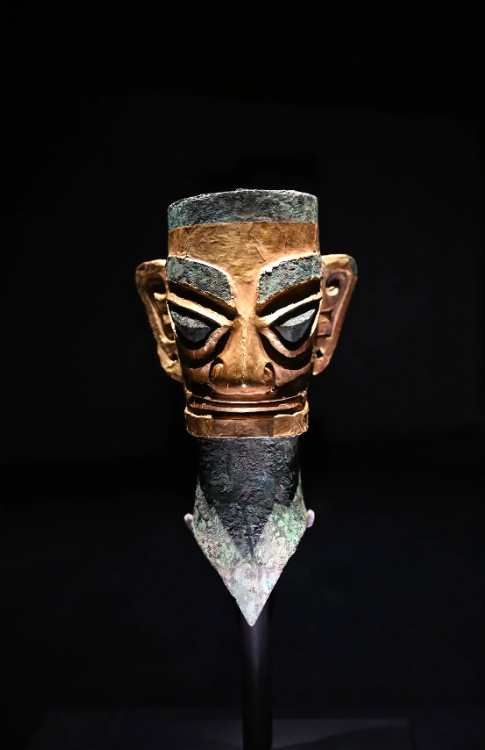
This is the bronze portrait with a gold mask in the new Sanxingdui Museum. Xinhua News Agency
The display cabinet's silk protein rapid detection kit is a "detective" that searches for invisible silk. After thousands of years buried, the silk of Sanxingdui has not disappeared. Through a small kit, archaeologists have confirmed silk traces on more than 50 pieces in Sanxingdui, some are attached to unearthed cultural relics such as bronzes, and some are hidden in the ashes.
In the process of the integration of Chinese civilisation, silk is a very significant factor. The audience can see the silk texture magnified dozens of times here, celebrating the ancient wisdom of Chinese culture.
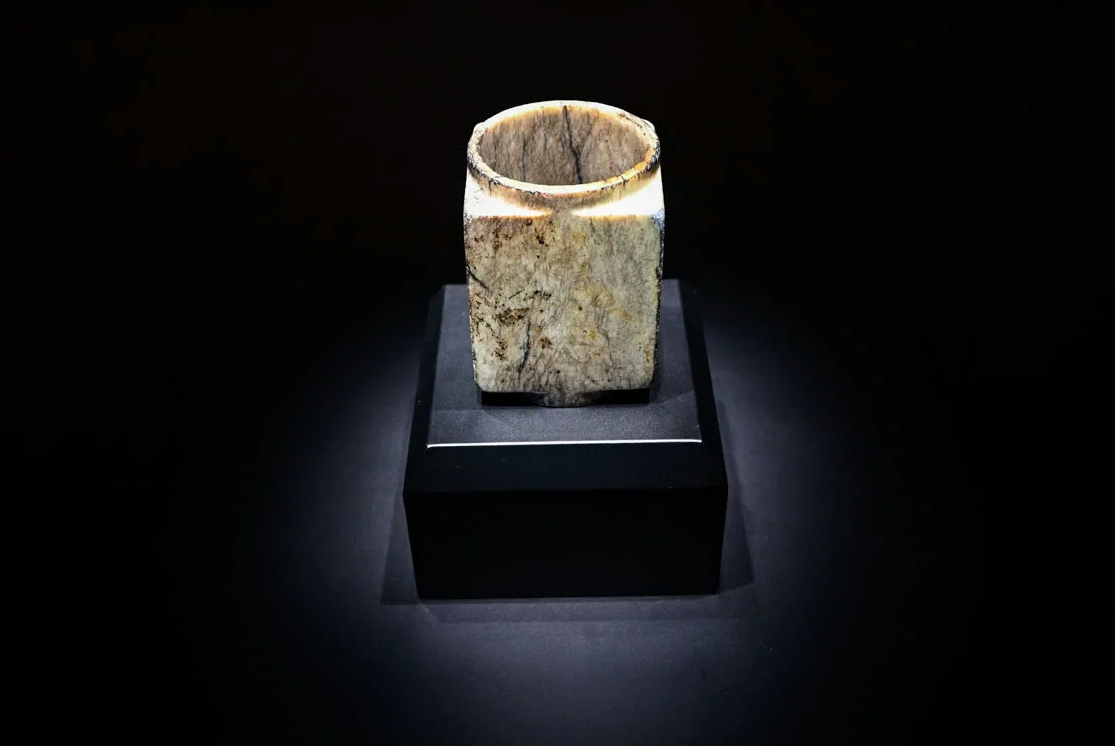
This is the divine tree pattern jade photographed in the new museum of Sanxingdui
I hope the audience will come here to see the cultural relics and understand the cultural connotation between Sanxingdui and the Chinese civilisation.
Zhu Yarong, deputy curator of Sanxingdui Museum
Integrating culture, science, and technology is another highlight of the new museum. With the help of this technology, we can see the latest restoration results of the bronze altar with complex shapes and rich connotations for the first time.
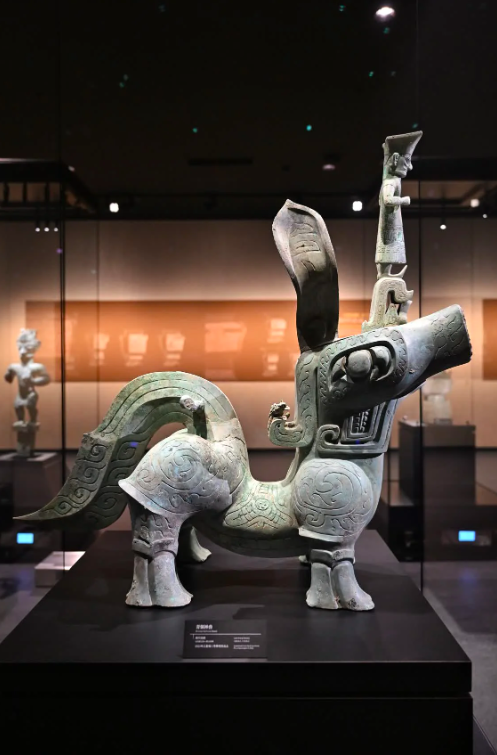
This is a bronze mythical beast photographed in the new Sanxingdui Museum. Xinhua News Agency
The archaeological excavation site of Sanxingdui is also shown in the new museum. The layers of cultural relics were covered with sacrificial pits, and the archaeological team members wearing protective clothing carried out their work in the "holy land" of ancient Shu. The visitors and archaeological team members have the same perspective, distance, and immersive touch of the beautiful moments of the freshly unearthed cultural relics.
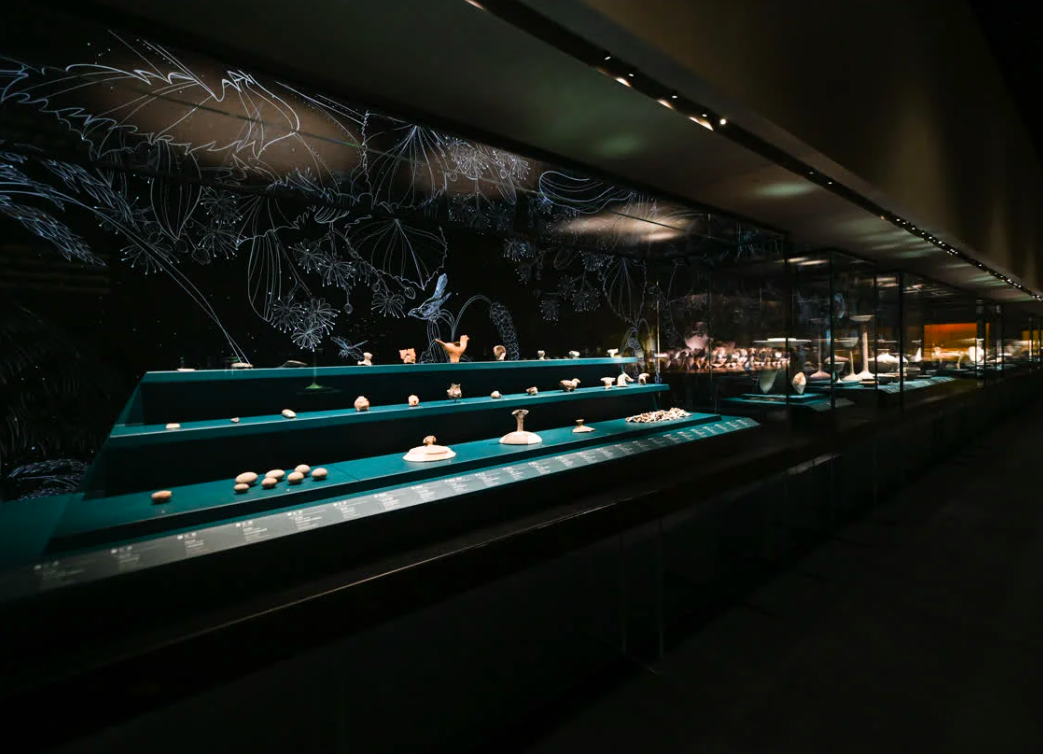
This is the pottery display in the new museum of the Sanxingdui. Photo by Xinhua News Agency
All the cultural relics have been moved to the new museum. However, the cultural relics protection and restoration museum still operates on the original site. There are also new unearthed cultural relics to be repaired here.
Visitors say:
Unrepaired cultural relics are rusty. Cultural relics and handwritten marks are classified and bagged, and the workbench is full of instruments. This opportunity to face history makes each of us proud, and we love the wonderful traditional Chinese culture.
Worked on the article:

Wanlikhang


